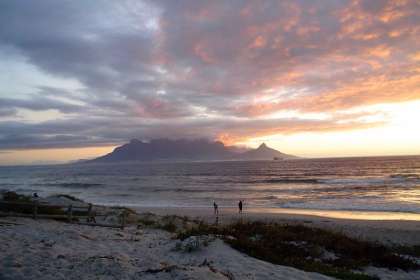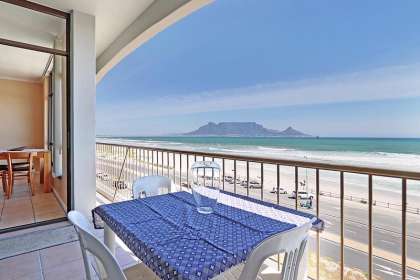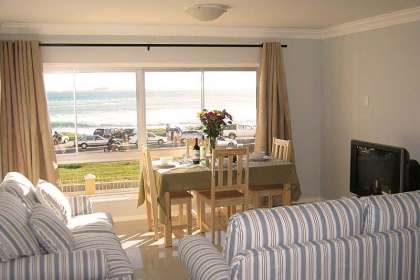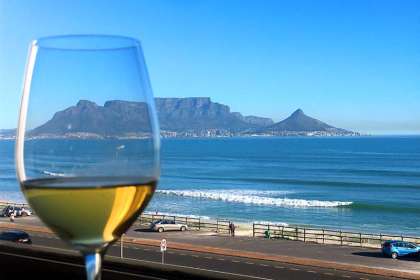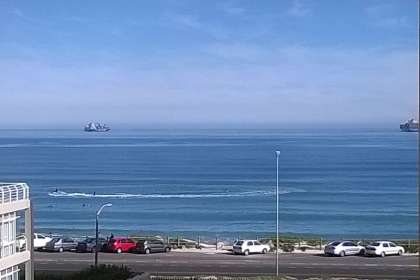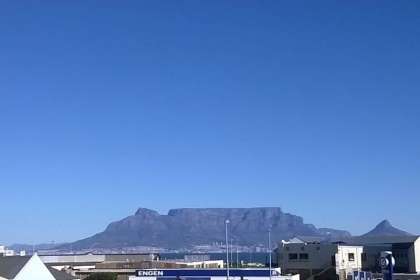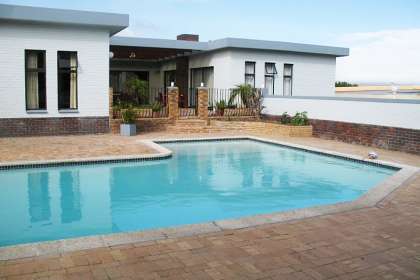Table Bay - Cape Town, Western Cape
- Victoria & Albert Waterfront (4.23km)
- Granger Bay (4.50km)
- Lagoon Beach (4.58km)
- Woodbridge Island (4.62km)
- Elliot Basin (4.76km)
- Sunset Beach (5.16km)
- Mouille Point (5.16km)
- De Waterkant (5.22km)
- Rugby (5.26km)
- Green Point, Kaapstad (5.27km)
- Foreshore (5.33km)
- Kaapstad (5.43km)
- Paarden Eiland (5.44km)
- Brooklyn, Kaapstad (5.64km)
- Bo-Kaap (5.86km)
- Port of Cape Town - Western Cape (3.74km)
- Cape Wheel - V&A Waterfront, Cape Town (4.05km)
- Granger Bay Harbour - Cape Town (4.19km)
- Cape Town Diamond Museum - V&A Waterfront (4.28km)
- Oranjezicht City Farm Market - V&A Waterfront, Cape Town (4.29km)
- Silo District - V&A Waterfront, Cape Town (4.34km)
- Zeitz Museum of Contemporary Art Africa - Cape Town (4.41km)
- New Somerset Hospital - Green Point, Cape Town (4.45km)
- Watershed - V&A Waterfront, Cape Town (4.47km)
- Cape Town International Film Market & Festival (CTIFMF) (4.55km)
- Two Oceans Aquarium - Cape Town (4.60km)
- Cape Medical Museum - V&A Waterfront, Cape Town (4.60km)
- Metropolitan Golf Club - Green Point, Cape Town (4.62km)
- Milnerton Golf Course - Woodbridge Island, Cape Town (4.64km)
- Cape Town Stadium - Green Point, Cape Town (4.64km)
- Milnerton Lighthouse - Milnerton, Cape Town (4.66km)
- Milnerton Flea Market - Cape Town (4.68km)
- Green Point Market - Cape Town (4.85km)
- Cape Town International Convention Centre (4.89km)
- Cape Gourmet Festival - Cape Town (4.89km)
- Cape Town International Jazz Festival (4.91km)
- The Shred Skatepark - Cape Town (4.95km)
- Cape Town Carnival - Cape Town City Centre (5.06km)
- Flea & Street Markets in Cape Town (5.06km)
- Cape Quarter Lifestyle Village - Green Point (5.24km)
- Cape Town Cycle Tour - Cape Town (5.27km)
- Cape Town Minstrel Carnival (Kaapse Klopse) - Cape Town (5.31km)
- De Waterkant Village, Cape Town (5.34km)
- Green Point Lighthouse - Cape Town (5.35km)
- Green Point Park - Green Point, Cape Town (5.42km)
Table Bay - Cape Town, Western Cape
Although the Cape was first explored by Bartolomeu Dias in the late 1400's it was on in 1652 that Cape Town was founded by the Dutch explorer, Jan Van Riebeek. And during this period the natural bay on the west coast of South Africa, just north of the Cape Peninsula, was named Table Bay. The bay was named after one of the country's most well know landmarks, Table Mountain.
Table Bay was one of the few places along the west coast that could harbour ships, but during the 17th and 18th many of the ships that were anchored in the bay were driven ashore by storms. The bay offers, little if any protection from the gale force winds which batter the coastline from both the South East and the North West. The Dutch however continued to use the bay as the other options were not viable at the time. Saldanha Bay which was much further up the West Coast was a good option but had no fresh water, and closer to Table Bay the other two options, Simon's Town and Hout Bay were harder to access at the time and only slightly more protected than Table Bay itself.
In 1858 a serious storm blew 30 ships ashore, completely wrecking them and killing many sailors. It reached a point where the British company, Lloyd's of London, refused to insure any ships in Table Bay during the winter months. It was this move that almost forced the British Colonial Government to start construction of the first breakwater in 1860. This over the years became the Victoria and Alfred Basin, Table Bay's first safe harbour. Today the Victoria and Alfred Waterfront preserves parts of the harbours history.
Table Bay also has a very important feature, especially to South African History. Robben Island can be found in the waters of Table Bay, the island where former president Nelson Mandela was imprisoned for decades. The Island is visible from shore or can be visited using the Robben Island Museum Tour.
Here are five interesting facts about Table Bay in Cape Town:
1. Historical Significance: Table Bay has played a crucial role in maritime history since the 15th century. It served as a vital stopover point for European ships traveling to the East Indies. The Dutch East India Company established a refreshment station here in 1652, which later grew into the city of Cape Town.
2. Iconic Backdrop: The bay is framed by the stunning Table Mountain, one of the most recognizable landmarks in the world. The flat-topped mountain provides a dramatic backdrop to the bay and the city.
3. Robben Island: Located in Table Bay, Robben Island is famous for being the site where Nelson Mandela was imprisoned for 18 years. The island is now a UNESCO World Heritage Site and museum, attracting numerous visitors annually.
4. V&A Waterfront: The Victoria & Alfred Waterfront, situated in Table Bay, is one of South Africa's most visited tourist attractions. It offers a mix of shopping, dining, entertainment, and cultural experiences, along with scenic views of the harbor and Table Mountain.
5. Diverse Marine Life: The waters of Table Bay are rich in marine biodiversity. It is a common sight to see dolphins, seals, and occasionally whales in the bay. The area is also popular for recreational activities such as sailing, kite surfing, and fishing.
Verblyf Naby Table Bay - Cape Town, Western Cape
8 Neptune's Isle
Self Catering Apartment, Flatlet Accommodation in Milnerton
4.6km from Table Bay - Cape Town, Western CapeNeptune's Isle cabana (slaapplek vir 4) is 'n wonderlike wegbreek vir plesiersoekende toeriste, of vir 'n naweekwegbreek. Selfsorg - Cabana is op die rand van die Atlantiese Oseaan geleë met uitsigte oor Tafelberg en Robbeneiland oorkant die baai, en …sien meer vir besprekings / navrae en inligting.
Beach Villa
Self Catering Apartment, Flatlet Accommodation in Mouille Point
4.7km from Table Bay - Cape Town, Western CapeBeach Villa, is 'n ruim twee slaapkamer woonstel met 'n pragtige uitsig oor die see en berg en binne loopafstand na die strand en 'n beroemde Waterfront. Pragtige uitsig oor die see, aand sonsondergange en rustig loop langs die strand promenade is aan die …sien meer vir besprekings / navrae en inligting.
Witsand 103
Self Catering Apartment, Flatlet Accommodation in Bloubergrant
5.9km from Table Bay - Cape Town, Western CapeHierdie ruim tweeslaapkamerwoonstel bied slaapplek aan vier persone en is op die eerste verdieping van 'n negeverdiepingwoonstelblok geleë met maklike toegang met 'n hysbak of trappe. Dit bied onbelemmerde en uitstekende uitsigte oor Tafelbaai... …sien meer vir besprekings / navrae en inligting.
Sea Breeze
Self Catering Apartment, Flatlet Accommodation in Bloubergrant
6km from Table Bay - Cape Town, Western CapeSea Breeze (slaapplek vir 4) bied selfsorgverblyf in Bloubergrant, Bloubergstrand, Kaapstad. Vanuit die sitkamer, hoofslaapkamer en balkon het jy die skouspelagtigste uitsigte oor die Bloubergrant-strand, see, Tafelberg, Kaapstad... …sien meer vir besprekings / navrae en inligting.
Green Point Self Catering Studio
Self Catering Apartment, Flatlet Accommodation in Green Point, Cape Town
6km from Table Bay - Cape Town, Western CapeGreen Point Self Catering Studio bied besoekers selfsorgverblyf in Groenpunt, Kaapstad City Bowl. Ons bied 2 selfsorg-ateljees. Green Point Selfsorg Studio 1 (slaapplek vir maksimum twee) is 'n smaakvol opgeknapte selfsorgateljee... …sien meer vir besprekings / navrae en inligting.
Aandvari Zeezicht
Self Catering Apartment, Flatlet Accommodation in Bloubergstrand
6km from Table Bay - Cape Town, Western CapeWelkom by Aandvari Zeezicht - 'n elegante, twee slaapkamer woonstel by die strand in Kaapstad se pragtige Blouberg. Met 'n perfekte uitsig op Tafelberg en die uitgestrekte see... …sien meer vir besprekings / navrae en inligting.
Sea View Zeezicht
Self Catering Apartment, Flatlet Accommodation in Bloubergstrand
6km from Table Bay - Cape Town, Western CapeDié selfsorgwoonstel aan die strand is in Bloubergstrand aan die pragtige Atlantiese kus geleë, met asemrowende see- en berguitsigte. Die strand is bekend vir watersport op sy eindelose wit sand, en is geleë tussen Dolphin Beach... …sien meer vir besprekings / navrae en inligting.
Aandvari Ocean View
Self Catering Apartment, Flatlet Accommodation in Bloubergrant
6.1km from Table Bay - Cape Town, Western CapeGeleë op Blouberg se pragtige strandfront is Aandvari Ocean View, 'n gemaklike en huislike selfsorg enkelwoonstel wat oor die see uitkyk. Die eenheid is perfek vir wittebrood akkommodasie, 'n spesiale wegbrek, sakereisigers of sommer net 'n lekker va …sien meer vir besprekings / navrae en inligting.
Aandvari Sunset Court
Self Catering Apartment, Flatlet Accommodation in Bloubergrant
6.1km from Table Bay - Cape Town, Western CapePerfek geleë 'n hartklop weg (200m) van die strand in Kaapstad se pragtige Blouberg, is Aandvari Sunset Court, 'n verborge juweel. Dit is die ideale bekostigbare plek, ten volle toegerus met al die huislike geriewe, om die omgewing te verken asook om …sien meer vir besprekings / navrae en inligting.
Blue Flamingo B&B
Bed & Breakfast Accommodation in Table View
6.5km from Table Bay - Cape Town, Western CapeBlue Flamingo Bed & Breakfast bied rustige, gerieflike verblyf in die stil, veilige noordelike kusvoorstad Table View, in Kaapstad, die moederstad van Suid-Afrika. …sien meer vir besprekings / navrae en inligting.
- Victoria & Albert Waterfront (4.23km)
- Granger Bay (4.50km)
- Lagoon Beach (4.58km)
- Woodbridge Island (4.62km)
- Elliot Basin (4.76km)
- Sunset Beach (5.16km)
- Mouille Point (5.16km)
- De Waterkant (5.22km)
- Rugby (5.26km)
- Green Point, Kaapstad (5.27km)
- Foreshore (5.33km)
- Kaapstad (5.43km)
- Paarden Eiland (5.44km)
- Brooklyn, Kaapstad (5.64km)
- Bo-Kaap (5.86km)
- Port of Cape Town - Western Cape (3.74km)
- Cape Wheel - V&A Waterfront, Cape Town (4.05km)
- Granger Bay Harbour - Cape Town (4.19km)
- Cape Town Diamond Museum - V&A Waterfront (4.28km)
- Oranjezicht City Farm Market - V&A Waterfront, Cape Town (4.29km)
- Silo District - V&A Waterfront, Cape Town (4.34km)
- Zeitz Museum of Contemporary Art Africa - Cape Town (4.41km)
- New Somerset Hospital - Green Point, Cape Town (4.45km)
- Watershed - V&A Waterfront, Cape Town (4.47km)
- Cape Town International Film Market & Festival (CTIFMF) (4.55km)
- Two Oceans Aquarium - Cape Town (4.60km)
- Cape Medical Museum - V&A Waterfront, Cape Town (4.60km)
- Metropolitan Golf Club - Green Point, Cape Town (4.62km)
- Milnerton Golf Course - Woodbridge Island, Cape Town (4.64km)
- Cape Town Stadium - Green Point, Cape Town (4.64km)
- Milnerton Lighthouse - Milnerton, Cape Town (4.66km)
- Milnerton Flea Market - Cape Town (4.68km)
- Green Point Market - Cape Town (4.85km)
- Cape Town International Convention Centre (4.89km)
- Cape Gourmet Festival - Cape Town (4.89km)
- Cape Town International Jazz Festival (4.91km)
- The Shred Skatepark - Cape Town (4.95km)
- Cape Town Carnival - Cape Town City Centre (5.06km)
- Flea & Street Markets in Cape Town (5.06km)
- Cape Quarter Lifestyle Village - Green Point (5.24km)
- Cape Town Cycle Tour - Cape Town (5.27km)
- Cape Town Minstrel Carnival (Kaapse Klopse) - Cape Town (5.31km)
- De Waterkant Village, Cape Town (5.34km)
- Green Point Lighthouse - Cape Town (5.35km)
- Green Point Park - Green Point, Cape Town (5.42km)

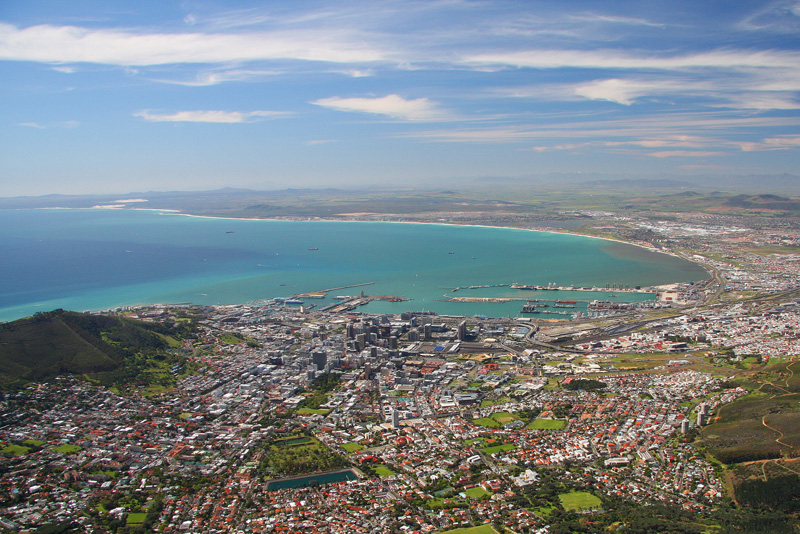 Cape Town and Table Bay ©
Cape Town and Table Bay © 

